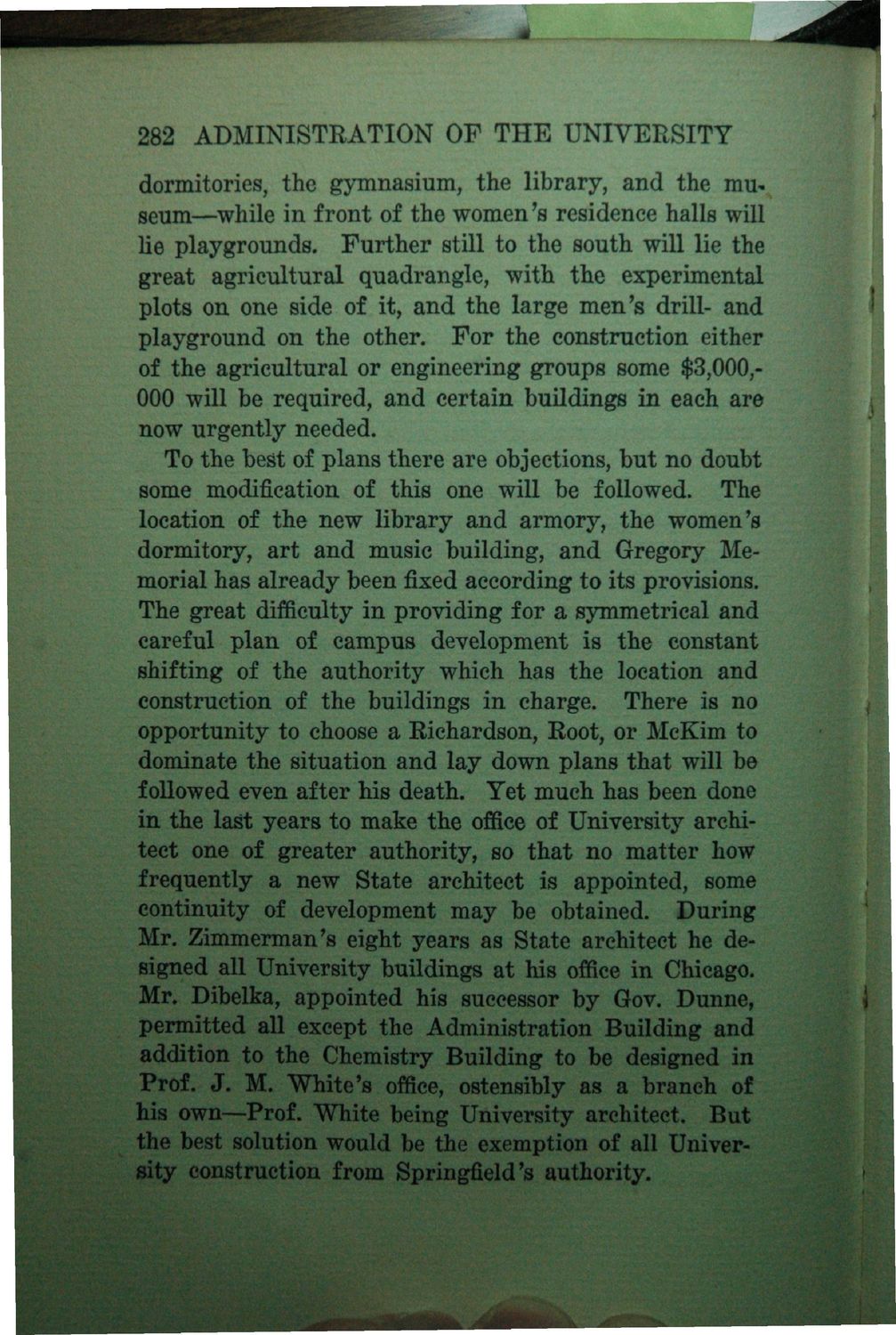| |
| |
Caption: Book - History of the University (Nevins)
This is a reduced-resolution page image for fast online browsing.

EXTRACTED TEXT FROM PAGE:
m... 282 ADMINISTRATION OF THE UNIVERSITY dormitories, the gymnasium, the library, and the museum—while in front of the women's residence halls will lie playgrounds. Further still to the south will lie the great agricultural quadrangle, with the experimental plots on one side of it, and the large men's drill- and playground on the other. For the construction either of the agricultural or engineering groups some $3,000,000 will be required, and certain buildings in each are now urgently needed. To the best of plans there are objections, but no doubt some modification of this one will be followed. The location of the new library and armory, the women's dormitory, art and music building, and Gregory Memorial has already been fixed according to its provisions. The great difficulty in providing for a symmetrical and careful plan of campus development is the constant shifting of the authority which has the location and construction of the buildings in charge. j | There is no opportunity to choose a Richardson, Root, or McKim to dominate the situation and lay down plans that will be followed even after his death. Yet much has been done in the last years to make the office of University architect one of greater authority, so that no matter how frequently a new State architect is appointed, some continuity of development may be obtained. During Mr. Zimmerman's eight years as State architect he designed all University buildings at his office in Chicago. Mr. Dibelka, appointed his successor by Gov. Dunne, permitted all except the Administration Building and addition to the Chemistry Building to be designed in Prof. J. M. White's office, ostensibly as a branch of his own—Prof. White being University architect. But the best solution would be the exemption of all University construction from Springfield's authority. S B BBS
| |